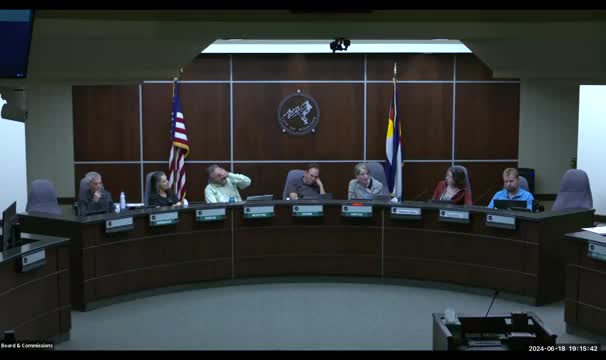New zoning rules spark debate over residential requirements
June 21, 2024 | Boulder, Boulder County, Colorado

This article was created by AI summarizing key points discussed. AI makes mistakes, so for full details and context, please refer to the video of the full meeting. Please report any errors so we can fix them. Report an error »

In a recent government meeting, officials discussed significant changes to zoning regulations affecting residential development in transit-oriented districts (TOD) and the Parkside residential areas. The new guidelines stipulate that for projects exceeding 15,000 square feet, developers must allocate 50% of the space for residential use, a shift from previous requirements that mandated all upper floors be residential.
This adjustment aims to provide greater flexibility for developers while still promoting residential growth in key areas. However, existing projects can expand by up to 40% without needing to meet the new residential requirements, as long as they adhere to current zoning regulations.
Officials acknowledged that previous estimates for housing units did not account for residential development within the Flatirons Business Park area, focusing instead on the station area and Parkside residential. The anticipated 5,000 housing units were expected to emerge solely from these designated areas.
The meeting also touched on the requirement for playground space, which mandates one playground for every 200 housing units within a project. This requirement raises concerns about smaller developments; for instance, three separate 100-unit buildings would not be required to provide any playground facilities.
Discussions included the rationale behind tree planting requirements, which aim to enhance landscaping and shade in urban areas. The current proposal suggests a tree for every 1,500 square feet in yards, while street trees would be spaced every 100 square feet.
Additionally, officials confirmed that there is an existing process for obtaining exceptions to the new regulations, allowing for flexibility in meeting the intent of the zoning laws.
As the city navigates these changes, officials are considering the implications of integrating residential spaces within industrial areas, a topic that remains under exploration. The meeting concluded with a commitment to further investigate successful examples of mixed-use developments in other cities, as Boulder seeks to balance industrial longevity with residential needs.
This adjustment aims to provide greater flexibility for developers while still promoting residential growth in key areas. However, existing projects can expand by up to 40% without needing to meet the new residential requirements, as long as they adhere to current zoning regulations.
Officials acknowledged that previous estimates for housing units did not account for residential development within the Flatirons Business Park area, focusing instead on the station area and Parkside residential. The anticipated 5,000 housing units were expected to emerge solely from these designated areas.
The meeting also touched on the requirement for playground space, which mandates one playground for every 200 housing units within a project. This requirement raises concerns about smaller developments; for instance, three separate 100-unit buildings would not be required to provide any playground facilities.
Discussions included the rationale behind tree planting requirements, which aim to enhance landscaping and shade in urban areas. The current proposal suggests a tree for every 1,500 square feet in yards, while street trees would be spaced every 100 square feet.
Additionally, officials confirmed that there is an existing process for obtaining exceptions to the new regulations, allowing for flexibility in meeting the intent of the zoning laws.
As the city navigates these changes, officials are considering the implications of integrating residential spaces within industrial areas, a topic that remains under exploration. The meeting concluded with a commitment to further investigate successful examples of mixed-use developments in other cities, as Boulder seeks to balance industrial longevity with residential needs.
View full meeting
This article is based on a recent meeting—watch the full video and explore the complete transcript for deeper insights into the discussion.
View full meeting
